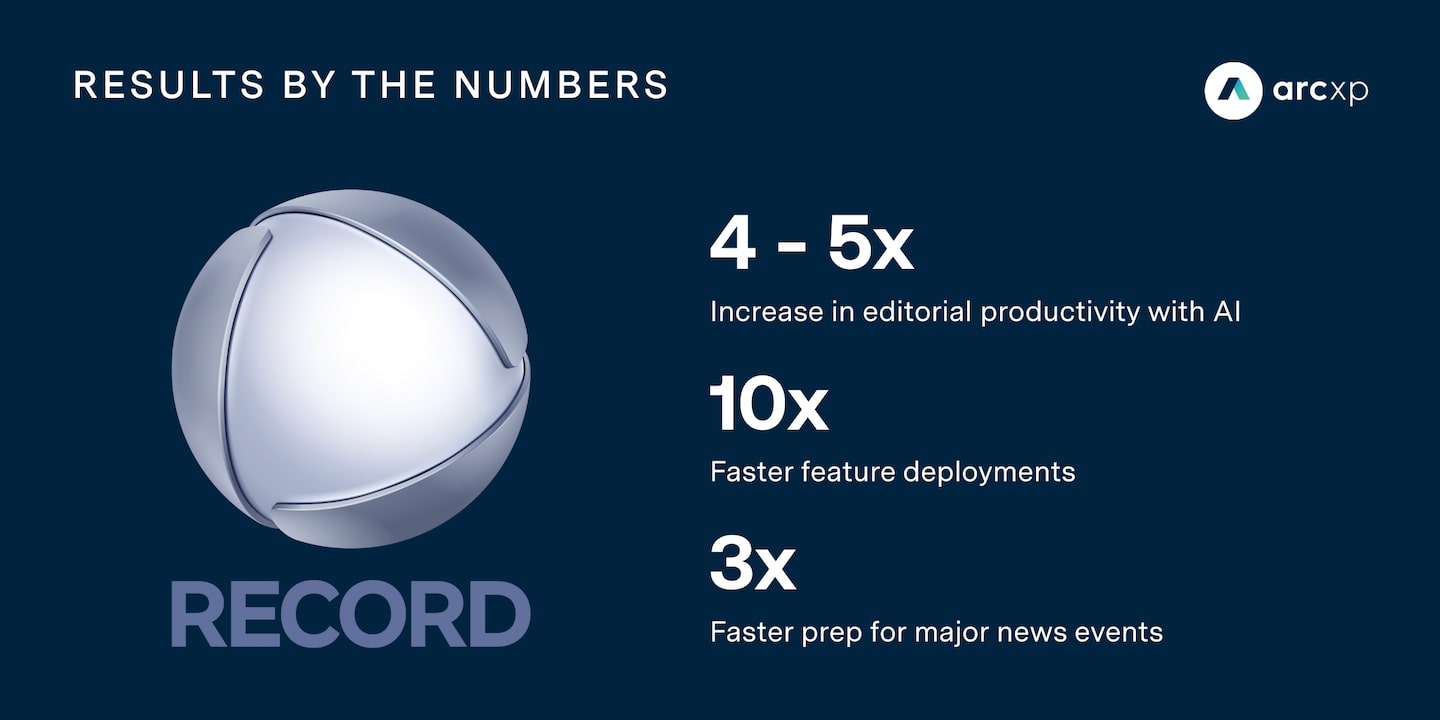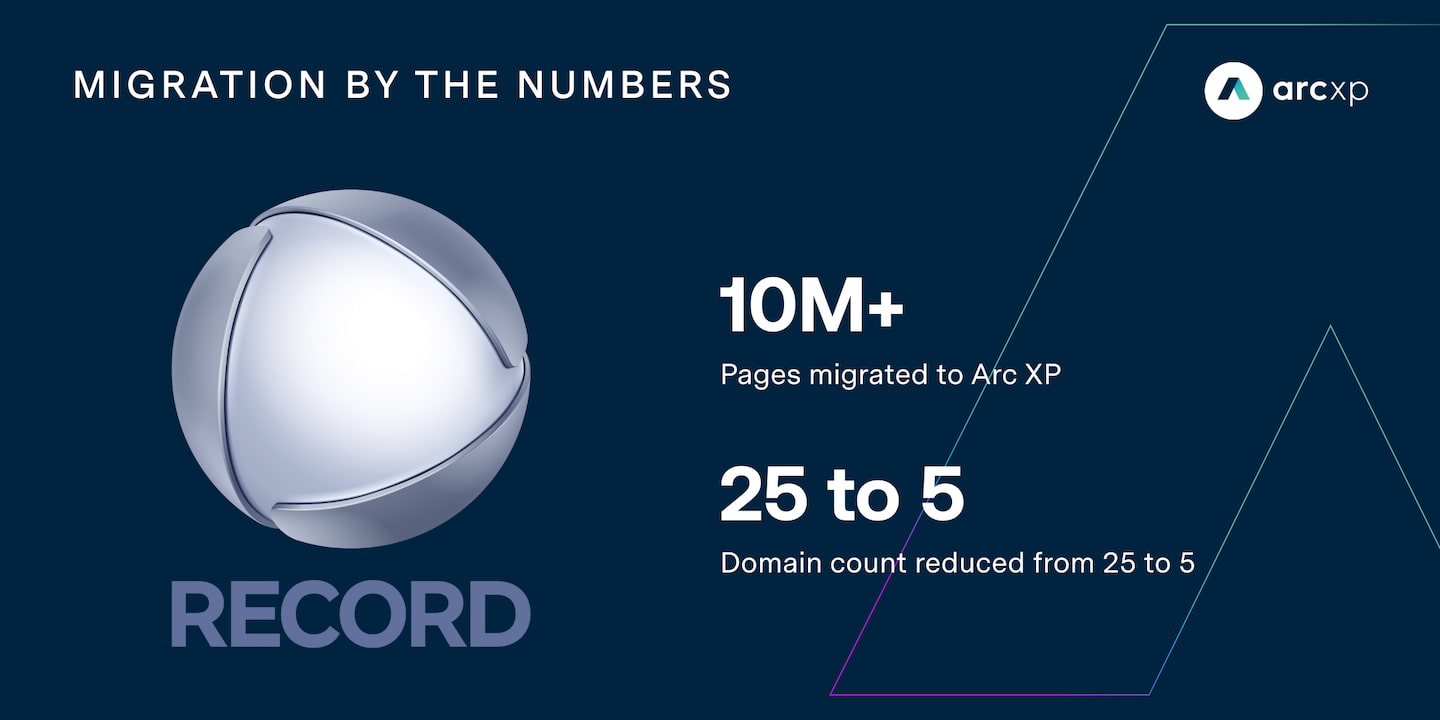AI at Broadcast Scale: How RECORD Publishes More, Faster — Redefining Broadcast Efficiency

For years, RECORD — one of Brazil’s largest broadcasters — ran its high-traffic news and entertainment portal on a homegrown CMS. But as their digital presence expanded, the pace of innovation became a challenge. The team needed to match the speed of the market, yet every new feature required custom development from scratch.
At the same time, operating and maintaining the infrastructure for 25 separate domains placed a heavy load on their developers. Valuable resources were tied up in keeping the system running instead of advancing the digital experience. RECORD recognized the need for a SaaS solution that would offload the operational burden and allow their teams to focus on building new capabilities.
Simply put, their homegrown CMS was holding the team — and the business — back.
“With the homegrown solution, we had to develop everything from scratch…even simple article pages,” said João Galdino Mello de Souza, Multiplatform Technology Director that is responsible for digital content solutions. “We knew we needed a SaaS solution so we could focus our resources on new features, not features I already have.”
Challenge: Consolidation & Migration at Scale
Moving from a homegrown CMS to a SaaS platform was a fundamental shift for the RECORD team, and it was no small feat to make it a reality. With over 10 million pages across 25 domains, the team was aiming to migrate their content but consolidate domains to a more centralized and manageable number.
Developers were not the only team being held back by inefficiency. The manual processes required by the existing homegrown solution were making it difficult to keep up with large-scale video publishing.
“Because our main content is from TV, we publish around 300 or 400 video videos per day,” said de Souza. “We needed a tool that could upload those videos easily and speed the publishing process.”
Solution: AI-Powered Publishing with Arc XP
RECORD selected Arc XP for its stability, scalability, and publisher-first architecture — and quickly put those capabilities to work. The migration wasn’t just a platform shift, but also a chance to streamline operations and modernize every step of the publishing process. The team consolidated their digital footprint of 25 domains down to a manageable 5, while Arc XP’s SaaS infrastructure eliminated the need for late-night change windows and complex rollbacks.
For the newsroom, Arc XP’s collections and templates automated the assembly of pages, letting editors spend more time curating stories and prioritizing coverage. Developers used Arc XP’s flexible templates and APIs to build custom blocks and tools that sped up feature delivery by as much as 10x.
“We use a lot of APIs, lots of content administration,” said de Souza. “The customizable blocks in Arc helped us deliver new features 10 times faster than our previous solution.”
And for RECORD’s video-heavy content, Arc XP’s Video Center became the backbone of a new, AI-powered workflow. The team built custom integrations to upload hundreds of video clips per day directly into Arc XP, using AI to auto-generate titles, descriptions, and SEO text. They even developed their own AI agents to turn those videos into full, SEO-friendly articles — ensuring content was accessible to audiences who couldn’t stream video on their devices.
With Arc XP, the RECORD team could finally focus more on building new products and experiences — from interactive games tied to reality shows to innovative audience engagement tools — instead of wrestling with the limitations of their legacy system.

Results: Scaling Impact Across Sites and Teams
With Arc XP in place, RECORD’s publishing speed, scalability, and editorial reach improved. The migration and domain consolidation gave the team a more stable foundation, while Arc XP’s streamlined deployments allowed them to deliver new features and site updates in days instead of weeks.
“The process of deploy and rollback in Arc is very easy and very fast”, said de Souza. “On average we used to spend about two sprints of 15 days on each deployment, but now it’s finished in 3 or 4 days. And it’s a live change…in the legacy system we had to have a change window for an hour outside of business hours.”
The productivity gains for developers have been dramatic. Even for major events like elections, de Souza said that preparation has been 3x faster than the previous system, which could take as long as 6 months to prepare for major news events.
For editors, automated collections and templates have cut down on manual work, freeing up more time for reporting, curation, and strategic content decisions.
The AI-powered video-to-article workflow (developed by the RECORD team and integrated into the platform using Arc XP APIs) has unlocked a new level of efficiency. Video editors could process 4–5x more clips per day, and the newsroom began producing nearly 500 article drafts daily — publishing about 200 — without adding staff.
“To do what we’re doing without AI, we would need a newsroom 2 or 3 times bigger than what we have today,” said de Souza. “People in the newsroom just have to do the final review, publish, and curation. So, we’re much more productive with this in place.”
These AI-generated, text-focused stories performed strongly in search, fueling a surge in Google Discover traffic that coincided with the rollout of AI articles. While de Souza admits that Discover traffic is a “black box” that’s hard to predict and interpret, he suspects that the internal linking and additional text content for each video story helped improve traffic.
“We saw a huge increase in Discover traffic around the same time we started publishing those AI-generated articles,” said de Souza. “We think that Google sees these articles as a complement…it gives more information to the user that is easier to consume.”
A Future-Ready Stack, Built for Growth
Today, RECORD’s digital team is no longer fighting their tools — they’re using them to stay ahead of the market. Arc XP gives them the stability and scalability to meet every business demand, while enabling a small technical team to deliver complex, high-impact solutions at the pace of their newsroom and audience.
From rapid election coverage builds to AI-driven publishing workflows, RECORD can now move faster, experiment more, and focus on creating engaging experiences for its audience. And as the media landscape continues to shift, they’re confident their platform can adapt just as quickly.
“Before we were always slow and late creating new solutions,” said de Souza. “Now, we can deliver ahead of the market — like these solutions with AI — with a small team, stable solutions, and still keep the product evolving every day.”
Recent resources




